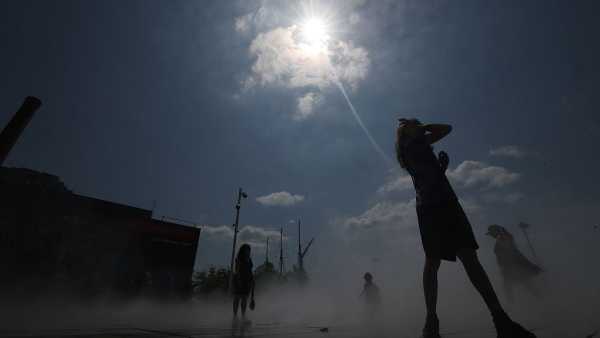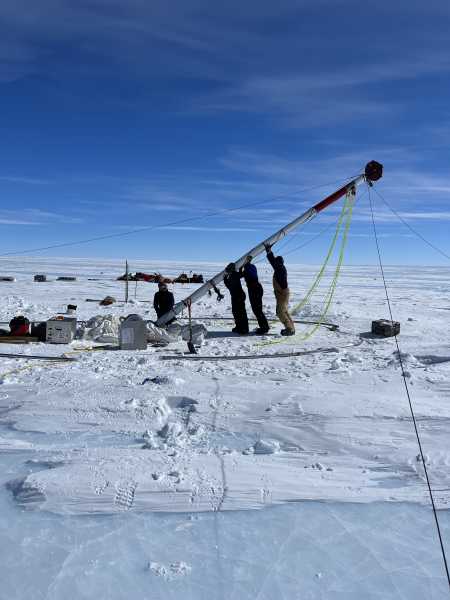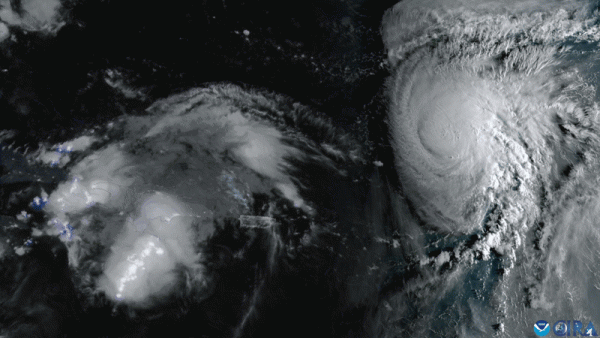
Hurricane Humberto (right) is expected to push Tropical Storm Imelda (developing left) off the East Coast. This GOES-19 satellite image was taken Friday, before Imelda strengthened into a named tropical storm. (Image courtesy of CSU/CIRA and NOAA)
Two hurricanes could be “dancing” in the Atlantic this week, with forecasters warning of life-threatening surf and rip currents along the East Coast. However, if this duo does indeed “dance,” it could spare the East Coast from the potentially catastrophic rainfall typically brought by one of the storms.
Tropical Storm Imelda is currently moving over the northwestern Bahamas and is expected to strengthen into a hurricane on Tuesday (September 30), according to the National Hurricane Center (NHC). Meanwhile, hundreds of miles offshore, Hurricane Humberto continues to rage, having reached Category 5 status on Saturday (September 27).
You may like
-
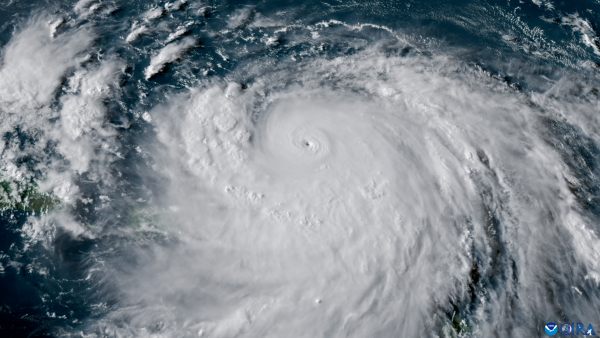
Forecasters warn that Hurricane Erin could bring 100-foot waves to the East Coast this week.
-
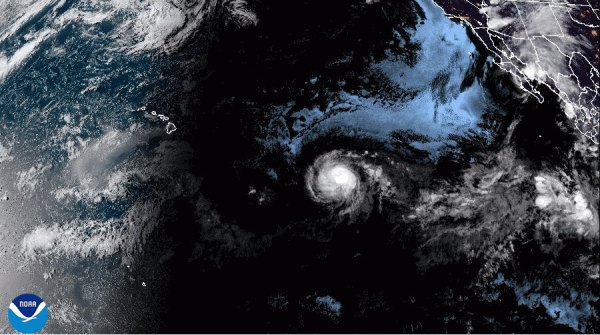
Category 4 Hurricane Kiko is heading toward Hawaii, but forecasters say it will weaken before it gets there.
-
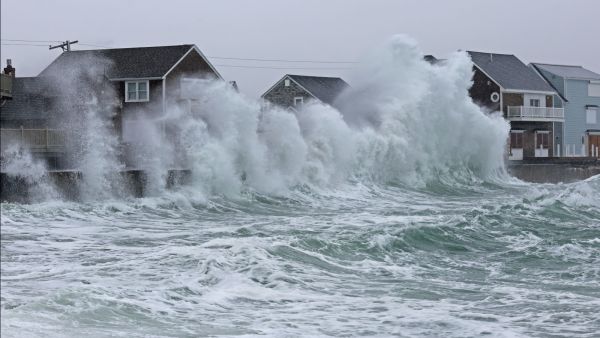
Strong northeasterly winds along the US East Coast are becoming more intense as global warming continues, according to a study.
Imelda is currently expected to move offshore from the Bahamas. Forecasters predict that Hurricane Humberto will push Imelda east-northeast, moving off the east coast toward Humberto.
“A rare Fujiwhara effect between Humberto and Imelda is expected to help protect the southeastern United States from widespread flooding,” said Alex DaSilva, AccuWeather's lead hurricane expert, in an emailed statement. “The influence of the much stronger and larger Humberto will pull Imelda along with it and help push the storm away from the United States and out to sea.”
Imelda is expected to bring heavy rainfall from Florida to North Carolina and southern Virginia, while both storms are likely to trigger dangerous rip currents from South Florida to the Mid-Atlantic, the National Centers for Disease Control and Prevention (NHC) warns. Humberto is likely to cause flash flooding in the northwestern Bahamas and eastern Cuba, as well as landslides in Cuba, the NHC reports.
The UN's World Meteorological Organization defines tropical storms as those with maximum sustained winds exceeding 63 km/h (39 mph). Imelda surpassed this threshold on Sunday (September 28), and currently has a maximum sustained wind speed of 85 km/h (50 mph), according to the NHC.
To become a hurricane, Imelda must reach sustained winds of 75 mph (119 km/h) or greater, which is expected to happen on Tuesday. There are five hurricane categories, based on the Saffir-Simpson wind scale, based on the intensity of the maximum sustained wind speed.
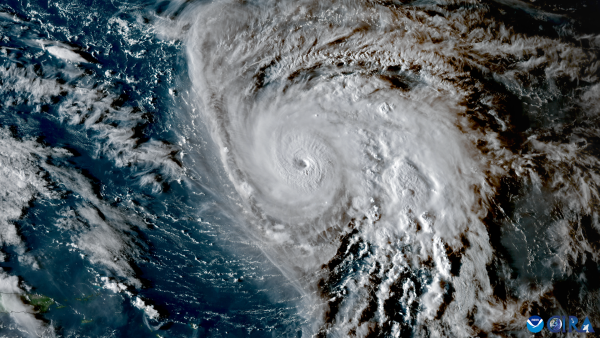
Hurricane Humberto strengthened to a major hurricane on Friday (September 26).
Hurricane Humberto, which formed on September 24, continued to strengthen, reaching Category 5 status on Saturday (September 27) with maximum sustained winds of 160 mph (260 km/h). Currently a Category 4 hurricane, it is moving westward, following the same strength and track as Hurricane Erin, a Category 5 Atlantic hurricane that formed in August.
You may like
-
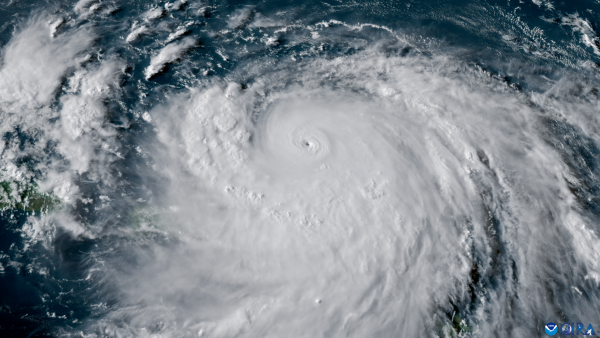
Forecasters warn that Hurricane Erin could bring 100-foot waves to the East Coast this week.
-
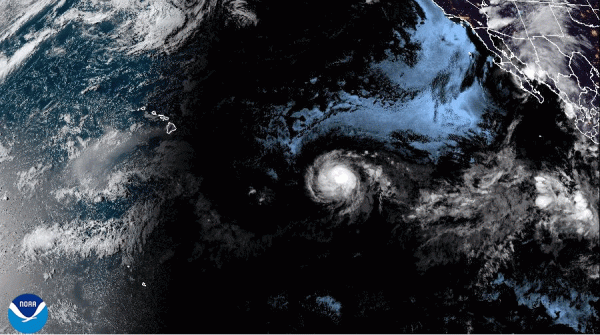
Category 4 Hurricane Kiko is heading toward Hawaii, but forecasters say it will weaken before it gets there.
-
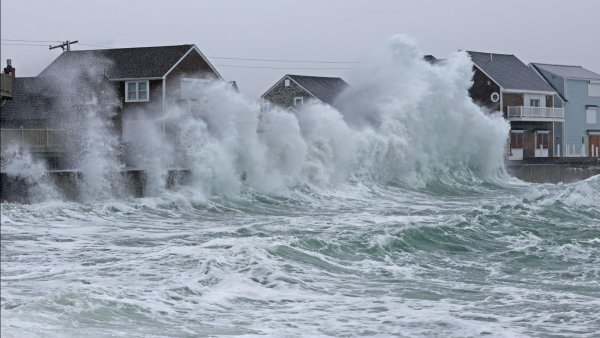
Strong northeasterly winds along the US East Coast are becoming more intense as global warming continues, according to a study.
According to DaSilva, Hurricane Humberto and the potential Hurricane Imelda will pass within 1,100 kilometers of each other during their approach. While the East Coast will still feel the effects of the storms, the situation could have been much worse.
“The Fujiwhara effect is quite rare in the Atlantic basin,” DaSilva said. “The interaction of the two storms should prevent Imelda from making landfall or lingering off the coast, which could lead to days of heavy rain and widespread flooding. The consequences could be catastrophic.”
RELATED STORIES
— 'Serious threat': China braces for the approach of Super Typhoon Ragas, the strongest storm this year, with winds reaching 180 km/h.
— Huge golf ball-sized hailstones left a 125-mile scar on the Canadian landscape — Earth from Space
Will there be a La Niña this fall? Here's what forecasters are predicting and what it means for the weather.
When two tropical storms meet during Hurricane Fujiwara, they don't simply collide. The most likely scenario for Hurricane Fujiwara is for one storm to be absorbed by the other. In this case, the storms may briefly orbit each other before the smaller one is drawn into the larger storm and becomes part of it, Accuweather reports.
According to the National Weather Service, a Fujiwhara scenario can, in rare cases, have an additive effect, with two hurricanes merging into a single, more powerful storm. Alternatively, the two colliding storms may simply orbit each other before moving off in different directions.

Patrick Pester, Social Link Navigator, Popular News Writer
Patrick Pester is a popular news writer for Live Science. His work has appeared on other science websites, such as BBC Science Focus and Scientific American. Patrick transitioned to journalism after working for zoos and wildlife conservation organizations early in his career. He received a Master's Excellence Scholarship to Cardiff University, where he earned a Master's in International Journalism. He also earned a second Master's in Biodiversity, Evolution, and Conservation in Action from Middlesex University in London. When not reporting, Patrick investigates the sale of human remains.
You must verify your public display name before commenting.
Please log out and log back in. You will then be asked to enter a display name.
Exit Read more
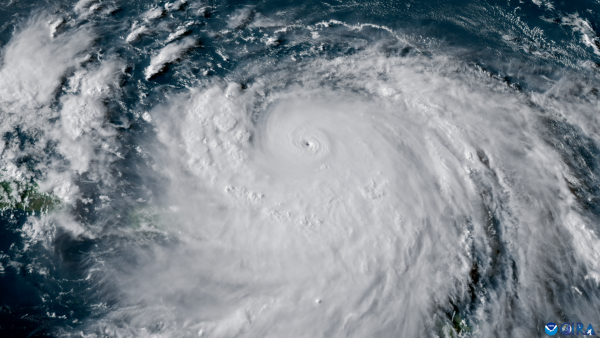
Forecasters warn that Hurricane Erin could bring 100-foot waves to the East Coast this week.
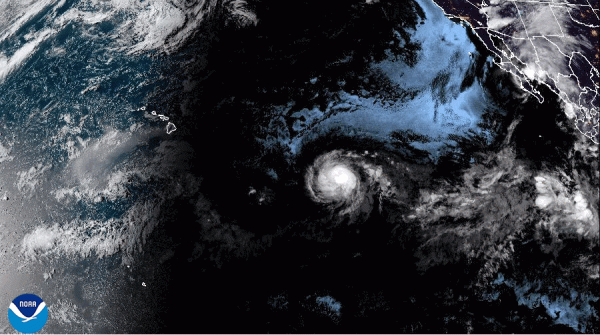
Category 4 Hurricane Kiko is heading toward Hawaii, but forecasters say it will weaken before it gets there.
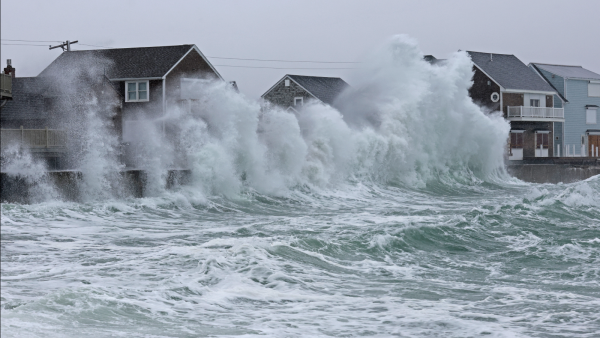
Strong northeasterly winds along the US East Coast are becoming more intense as global warming continues, according to a study.
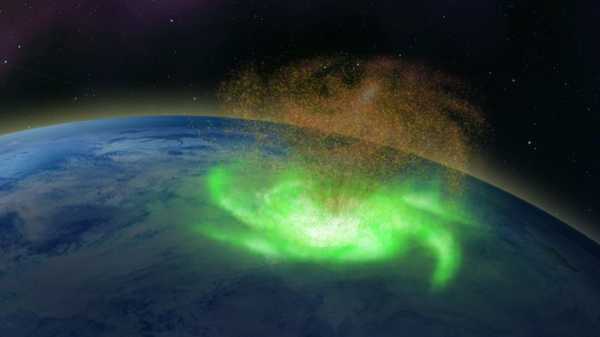
A 'space hurricane' captured a storm raging over the North Pole on one of the calmest sunny days
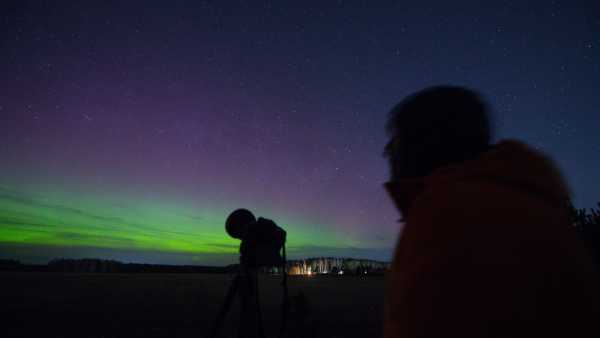
A 'cannibal' solar storm could cause auroras over 18 US states this Labor Day.
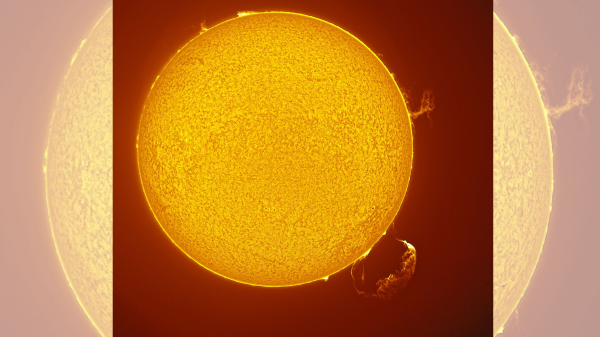
A solar tornado rages across the Sun, spewing out a giant plume of plasma.
Latest weather news
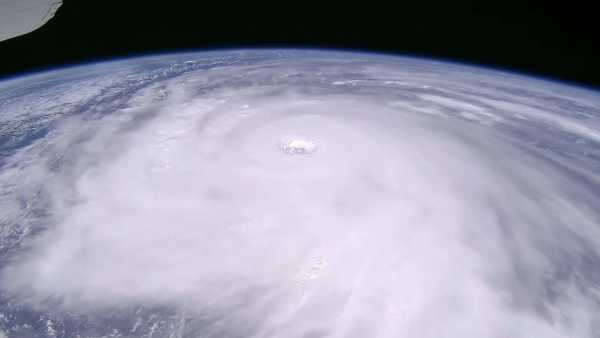
'Serious threat': China braces for the approach of Super Typhoon Ragas, the strongest storm this year, with winds reaching 180 km/h.
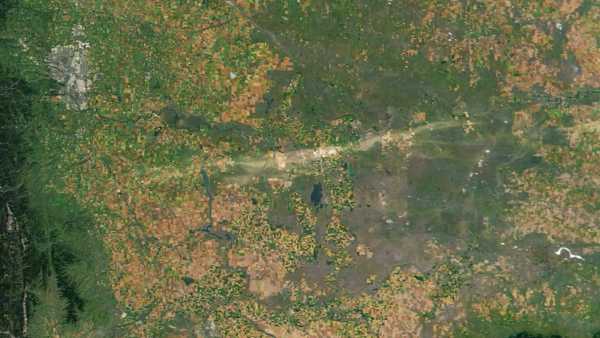
Huge golf ball-sized hailstones left a 125-mile scar on the Canadian landscape
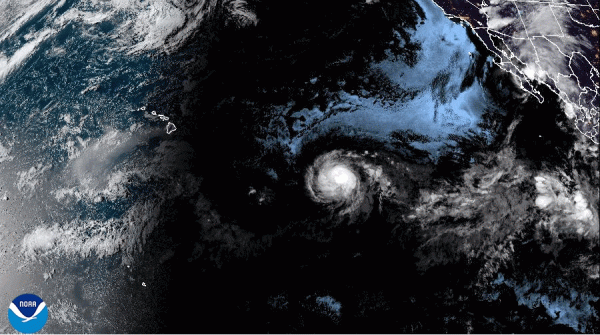
Category 4 Hurricane Kiko is heading toward Hawaii, but forecasters say it will weaken before it gets there.
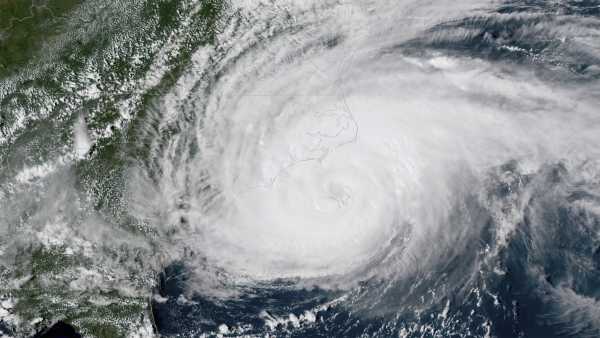
'Now is the time': Category 6 storms may be introduced under the new storm intensity scale.
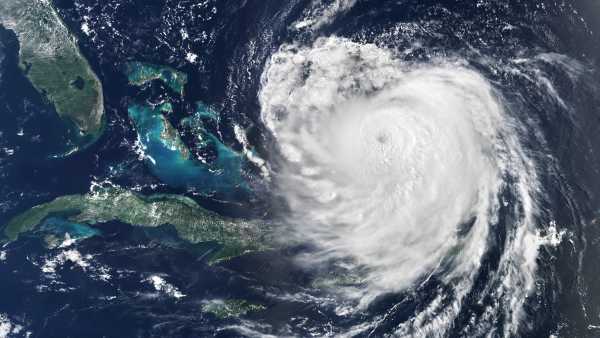
Forecasters Predict La Niña Conditions This Fall: What to Expect
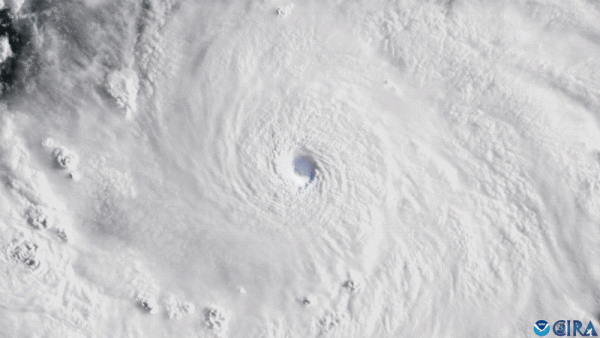
Watch as Hurricane Erin reaches Category 5 strength with lightning.
Latest news
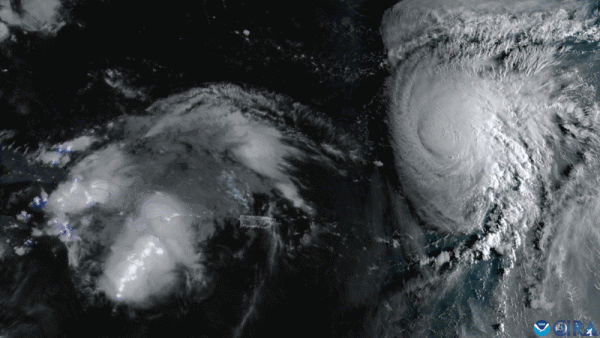
Hurricane Fujiwara's rare 'dance' could spare the East Coast from the worst of Tropical Storm Imelda.
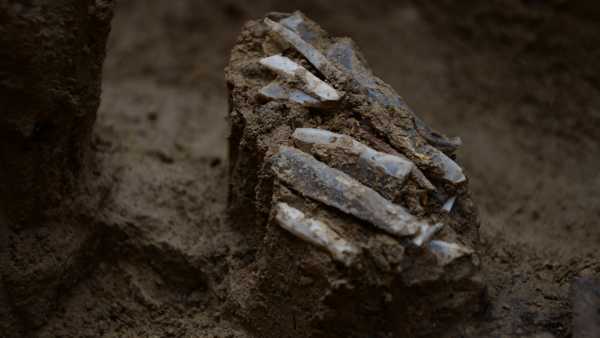
A 30,000-year-old “personal toolkit” discovered in the Czech Republic offers a “very rare” glimpse into the life of a Stone Age hunter-gatherer.

Is acetaminophen safe during pregnancy? Here's what the science says.

Scientists say the mysterious cosmic explosion cannot be explained.

Physicists have found a loophole in Heisenberg's uncertainty principle without violating it

This week's science news: A breakthrough drug for Huntington's disease and a fast-growing black hole that defies the laws of physics
LATEST ARTICLES

1Eagle Brooches: 1,500-year-old pins adorned with dazzling gemstones and glass worn by influential Visigoth women.
Live Science magazine is part of Future US Inc., an international media group and leading digital publisher. Visit our corporate website.
- About Us
- Contact Future experts
- Terms and Conditions
- Privacy Policy
- Cookie Policy
- Accessibility Statement
- Advertise with us
- Web notifications
- Career
- Editorial standards
- How to present history to us
© Future US, Inc. Full 7th Floor, 130 West 42nd Street, New York, NY 10036.
var dfp_config = { “site_platform”: “vanilla”, “keywords”: “type-news-trending,serversidehawk,videoarticle,van-enable-adviser-
Sourse: www.livescience.com


